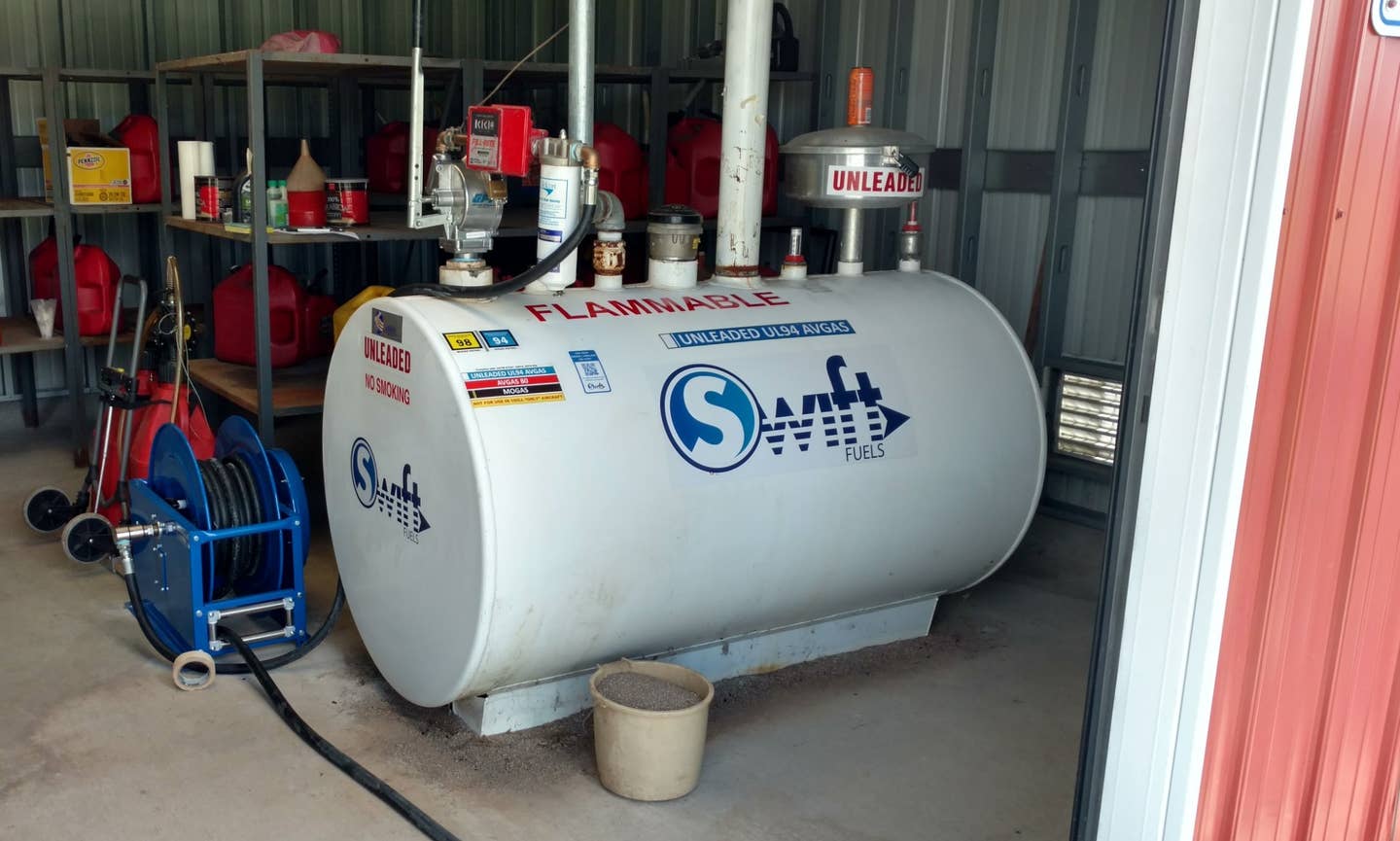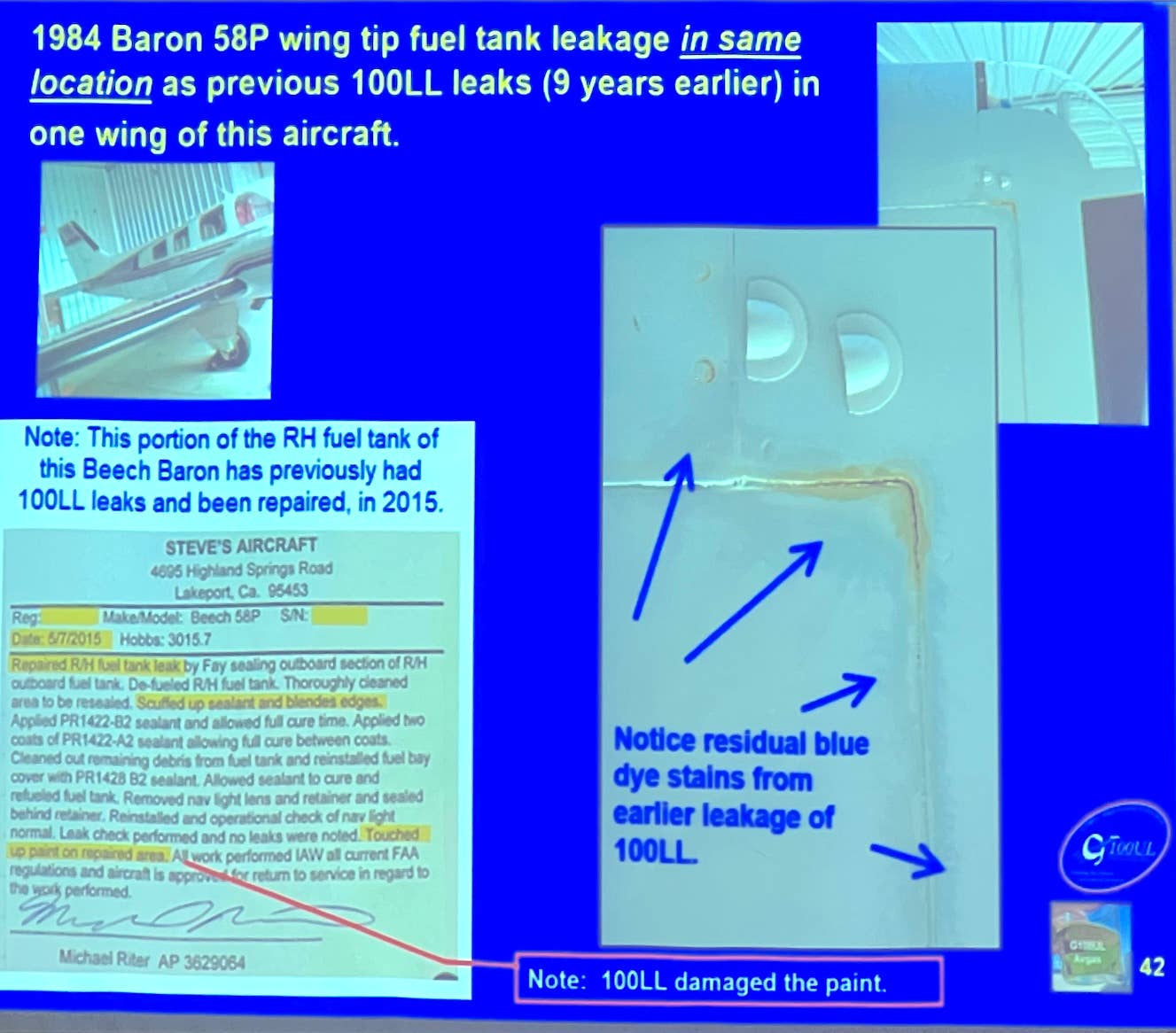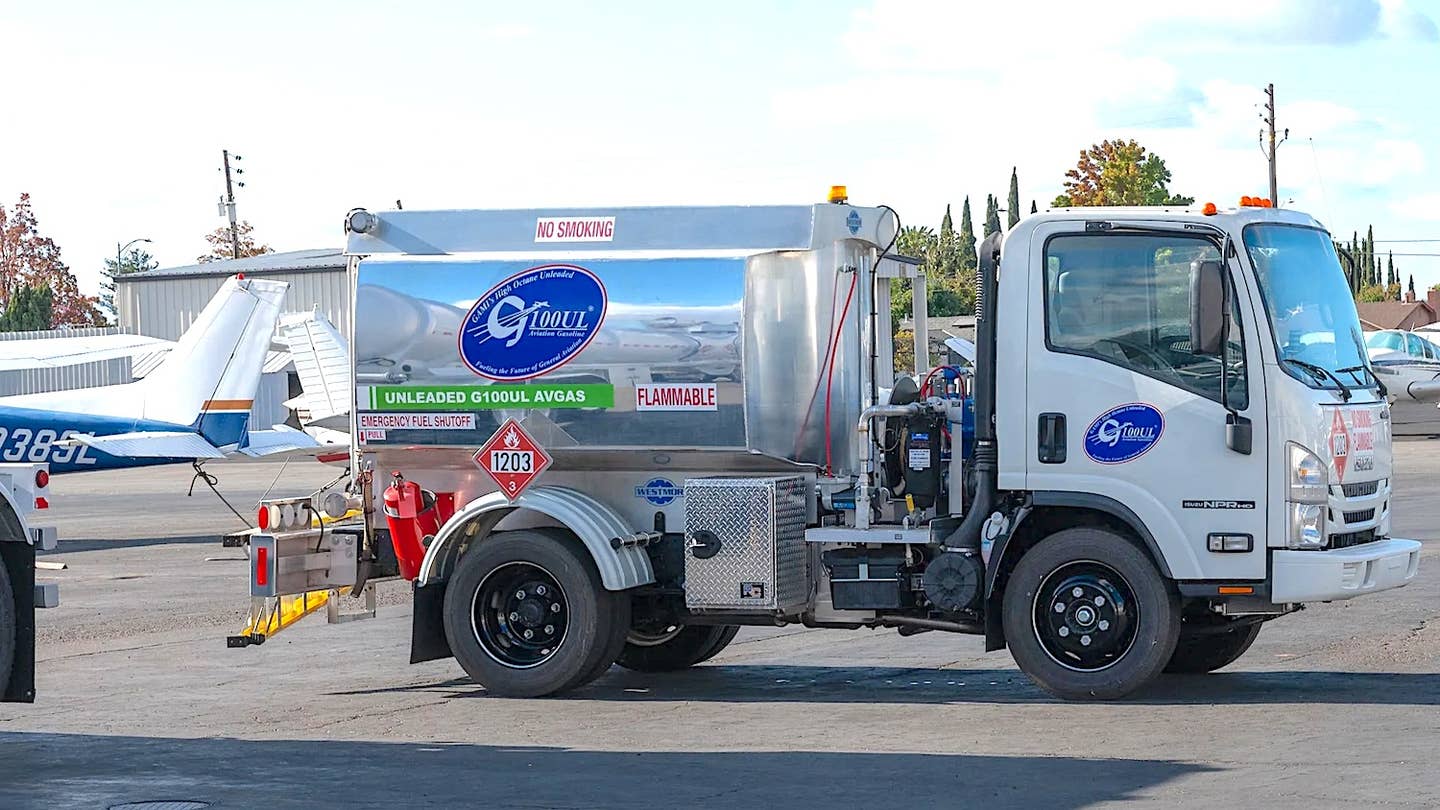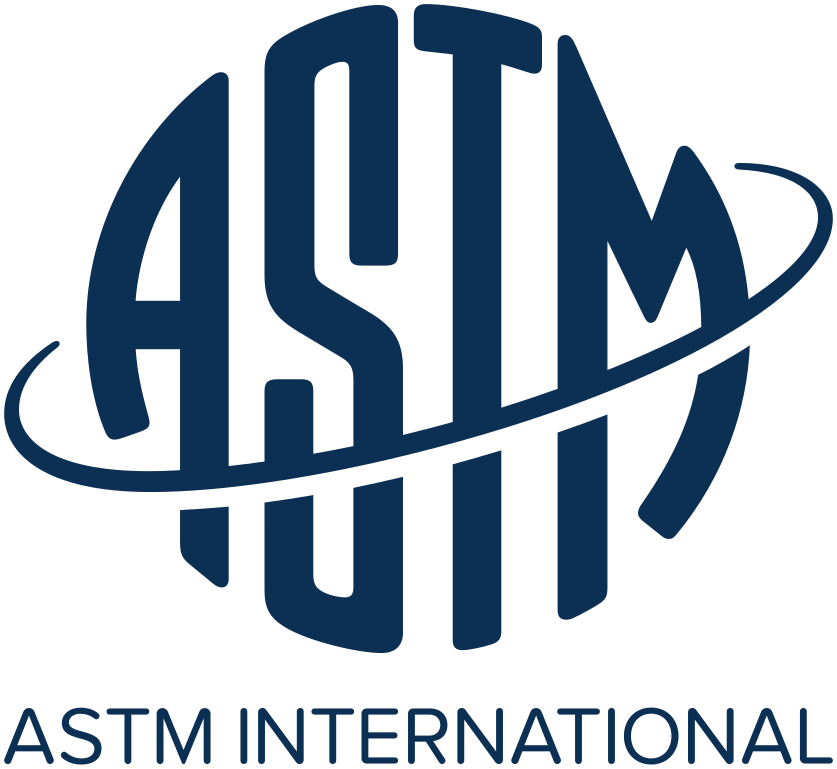Motor Head #17: All I Want for Christmas …
AVweb’s Marc Cook doesn’t believe in fairy tales — he knows he can’t get turbine power and reliability at piston prices and fuel consumption, for instance — but he does want Santa to give him a few nice improvements to his engine.
There's an unwritten rule in column journalism that you shouldn't date the material by affixing it to a holiday boresighted by the publication date or, heaven forbid, even on that date. I mean, what's more pathetic than noticing in February a piece of commentary tied to Thanksgiving traditions or something tied to the rites for Spring while you're facing a driveway full of snow? (Or, that very reference in July when it's 110 degrees and 200% humidity?) As the great philosopher F. Bueller said, "Life moves pretty fast."Well, too bad: This should arrive out in that great digital world on Christmas day, when most of us are resting peacefully with family and friends, perhaps exercising your Control-Alt-Delete fingers trying to set up that new Dell. (Dude, you're getting fatal errors!) With that coincidence, I'll break the rule. Just once.So, what does a motor-minded aviator want for Christmas?For starters, I want some truly new engine technology in general aviation. Let's start by defining that with my pet theory: For piston-driven aircraft powerplants, what I define as technological lethargy concerns the ancillaries. I believe that our current engines, when assembled properly with good-quality parts (not always a given), are suitable to the task. (Friends of rotary, steam, external-combustion or any other kind of engine, please hold your ire to the end.) What's more, the airplanes we have are built for them: They fit, they weigh about the right amount (not an ideal amount, surely, but their size and heft has been accounted for), and represent known quantities in terms of durability, vibration (important to the propeller as well as the passengers) and cooling requirements.Instead, I think a properly built "Lyconental" is a good base for advanced injection and ignition. I've been watching this category carefully and am ready to jump in, if not with the whole body then at least with a toe or two. My own airplane is powered by an Experimental-category, four-cylinder, IO-390, built by Barrett Precision Engines from kit components sold by Lycoming. There are no non-Lycoming parts in the engine but all the major components have been inspected and many of them have been improved in small ways before assembly. It is, I think, at the heart a robust engine with good power.But it is still driven by a pair of fixed-timing magnetos and fed by a mechanical fuel-injection system that requires a lot of my attention. Thanks to something called a purge valve, this system is easier to hot-start than many Lycomings, but it's still not easy. You need just the right combination of throttle, mixture, degree of prime and, sometimes, the amount of time you leave the purge valve in the cutoff position -- no fuel runs to the engine -- to get it lit. I'm as romantic as the next guy, and I'll smile and nod when I hear about the trials of starting big-inch radial engines from those who have done so -- and, no doubt, embellished the tale -- but enough is enough. Someone pointed out recently that if the average pilot's Toyota was this hard to start, he'd trade it in without a second thought.
Electronic Ignition
So electronic ignition has been on my mind. For Experimentals, there are several brands, but the one in my sights is the E-Mag and P-Mag by E-MAG Ignitions for a couple of reasons. One is that the devices are intended to directly replace mags on the engine itself. Some of the other electronic ignitions require remote boxes, a place to put the coils ... lots of small things that add time to the installation. Not that it's a deal killer, but I've had my fill of unintended consequences in mounting new equipment; it's really difficult to foresee what you'll want to install next and to make suitable accommodations for it.So the P-Mag and E-Mag bolt to the engine, that's swell. The difference is that the E-Mag is externally powered and the P-Mag contains a small internal generator used when ship's power is lost; it normally does not operate on this generator and, in fact, can't be started on it because the come-in speed is 800 engine RPM.In a nutshell, the P-Mag/E-Mag combo have a simple logic to ignition timing. Below a certain RPM, timing occurs at or near Top Dead Center, which is necessary for starting. After the engine starts, the timing is set according to a simple table, with advance increasing with rpm. These devices can also monitor manifold pressure, retarding timing slightly at high MP (hence high power) and advancing at low MP. So far so good, but the units have no idea about mixture strength, and here's where the ignition needs to be tweaked the most. A lean mixture simply burns slower, and to gain the most efficiency running lean-of-peak EGT (LOP) is to advance the timing. But that same timing set, used rich of peak, can lead to disastrously high cylinder pressures, high CHTs and, no doubt, high wear.
Automatic Fuel Control
OK, hold that thought, and let me advance (so to speak) to the next item on my Christmas wish list, and that's rational fuel control. I admit that I'm a "fiddler" in the cockpit, and spend a fair portion of my mental bandwidth ensuring that my engine is operating just so. But my injection system is a compromise at best. To have sufficient fuel flow for takeoff, it goes over-rich after I pull the prop back to 2500 or 2600 for the climbout. (I do this primarily because noise and vibration inside the cabin take a big dive with just that first 100 rpm. Spinning a 74-inch prop, the outside noise footprint is still modest at 2700 rpm.) So it gets a quick tweak of the mixture, then I wait for it to stabilize and see if one of the cylinder is around 1300 F EGT.From that point and on up through the climb, I have to periodically unscrew the mixture knob to keep the engine from trending rich. (Those who believe that mass-airflow systems adequately lean during climbout haven't been in any of the several IO-type Lycomings I have; none, in my experience, kept the EGTs where I would like them.) Every minute or two, it's slight tweak, watch the CHTs, and then resume flying the autopilot.In theory, a FADEC could do just this, but it would have to be programmed correctly. None of this "searching for best power on takeoff or during the climb, waiting for a cylinder to turn red hot before doing something." Nope, not with my $30,000 engine.That's why I'm excited about Precision Airmotive's Experimental FADEC, which should have lookup tables that can be set by the user. Maybe then I can get my engine to do precisely what I want it to without me having to do anything.My Christmas-present FADEC would do more than manage power during the climb. In fact, it would, on the surface, do less than the current FADECs from a hardware standpoint. I would attach an autopilot servo to the mixture control of my existing system. Despite the need for constant fiddling, the underlying system functions well and is as simple and reliable as I think you're going to make it. I would leave the throttle control hooked to the throttle; no fly-by-wire for me. I would give the FADEC full control of the prop, without mechanical reversion. (I would want mechanical reversion on the mixture control, just as you do in a flight-control system.) I can probably land the airplane with the prop anywhere between its high and low governing limits in case of a failure, but a closed throttle or mixture in idle-cutoff would create an instant emergency.I think a simple travel switch set at full throttle could tell the controller that max power is desired, so it would advance the prop to max, and move the mixture to full rich. Then, start looking at fuel flow and switch on the boost pump, if you'd like, but absolutely do so if inlet fuel pressure falls below a certain mark. The computer would continue to monitor CHTs and EGTs for abnormalities and limits.By retarding the throttle ever so slightly, you could tell the computer it's time for climb and it would reduce prop RPM and begin trimming fuel. A vibration sensor could be used to set a prop rpm for minimum shake within a preset band of engine speeds. Now the computer watches EGTs and leans to achieve a target number. It watches CHTs as well, and when one gets to 380 F, it adds back fuel.For cruise, flip a switch and ask for Go Fast or Go Far. (I'm hoping my friends at the Advanced Pilot Seminars will see this as "fair use" of their terminology.) These settings can be set up by the pilot ahead of time. Go Fast could keep climb power in -- remember that I'm normally aspirated -- and merely trim the mixture to keep the hottest cylinder below a preset limit. Go Far would take it LOP and set the mixture to maintain certain distance from peak and/or certain CHT readings. Employ that vibration sensor to listen for mixture imbalances and correct for them.
Combine the Two
Now, back to the ignition. The P-Mag and E-Mag can be managed externally, right now through a simple "add some" or "remove some" advance schedule, but there's no reason it could not be fed timing suggestions from the mixture computer, which will know if the engine is LOP or ROP.There's more. My airplane is fairly swimming in data. The Dynon EFIS and engine monitor boxes know about airspeed, altitude, OAT (and, hence, density altitude) and spit this out in a serial data stream. So enlightened, the injection computer could easily determine the proper initial setting for a high-altitude takeoff. I could easily determine the start of a descent and reset the mixture to help moderate CHTs.GPS data could be used to help set cruise power. Wouldn't it be great to plug in the destination airport and compare the fuel required to the fuel on board? It would be simple to have the computer modulate the degree of Go Fast or Go Far power settings to ensure you'll have your desired reserve when you get there.My dream system exists only in my dreams. Maybe next Christmas.
Better Manufacturing
That should be enough, but I'm not done dreaming of sweet Christmas gifts. How about better quality control in current production aircraft engines? I admit that I'm not a manufacturing expert, nor do I know a lot about process control. The one company I worked for that employed Six Sigma was so monumentally screwed up -- so incredibly top heavy with incompetent management and incorrigibly cynical about its employees -- that I'm fairly sure you can't just invoke process control and everything will be fine.But I hear something just about every day concerning new parts that don't fit -- components out of spec that have just come from the manufacturer. One builder I know ordered a brand-new engine that was supposedly test run at the factory but turned out to have its timing set at 19 degrees BTDC ... only, oh, about six degrees of separation to the spec. Makes you start thinking: Hmmm, what else did they miss.I realize these are small-margin engines largely hand-made, but we should do better.Another wish, perhaps small enough to go in a stocking: Truth in advertising. I've seen plenty of dyno charts from boutique engine shops showing how a hot cam and high compression will add 20-30 hp over the stock engine. Scan down the line to the fuel flow, and if it works out to a fuel specific of 0.5 pounds per horsepower hour, you're looking at a best-power mixture. When are you going to use that in your airplane? How many of us aim for 75-100 degrees F rich of peak on takeoff? How can they make those claims? Easy: The engine did it on the test stand, and here are the numbers. Fine, but we don't fly test stands; the better dynos have enough cooling capacity to tamp down CHTs on all but the highest-strung engines.I had a refreshing discussion recently with Bart LaLonde, owner of Aero Sport Power, an engine shop of high repute. He described his IO-375 project -- a long-stroke, parallel-valve, Lycoming-based O-360 -- that was tested at 204 hp at takeoff fuel settings, but something like 214 at best-power mixture. With a modest 9.0:1 compression ratio, the engine gains power in scale with the increase in displacement, but his ultimate goal was to improve torque in the 2300-2500-rpm range typically used in cruise. By upping the stroke and maintaining the stock O-360 cam timing and valve gear, he managed to increase intake velocity at lower RPM with no loss of top end. (In truth, these engines have pretty flat torque curves.) Admirable goals, but most admirable is that he doesn't tout it as a 214-hp engine.Again, perhaps it's just a dream, but a Christmas wish for realism and quality control from manufacturers shouldn't be too much to ask. I don't see any presents the right size under my tree this year, though, so I'll just remind Santa again next year.
Got motors on your mind? Check out the rest of Marc's columns.






